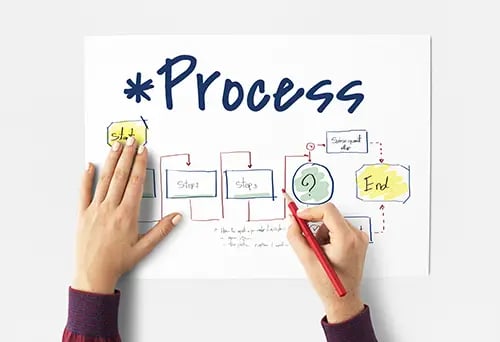Why define the processes that affect the customer experience?
According to Gartner, when deciding where to shop, 64% of people consider the quality of the customer experience more important than price.
As companies grow and adapt to market demand, they must create strategies that impact the efficiency of business processes and the quality of products and services, resulting in greater customer satisfaction.
It is vital to apply tools with a macro approach that allows us to delve into those steps, variables, and resources where we should put more detail. I invite you to learn about the value stream map tool, which will guide you through creating a beneficial impact on customer experience.
A value stream map (VSM) is an innovative tool for visualizing, analyzing, and optimizing the customer journey while interacting with the company. As a visual representation, it helps to identify areas for improvement and potential opportunities to enhance the customer experience, capturing essential elements to understand the customer's relationship with the company interactively and resulting in the active participation of work teams. The tool can transform the ordinary into the extraordinary easily, quickly, and involving multidisciplinary teams.
Index
What is the value stream map?
A value stream map is used in process management and continuous quality improvement. In customer experience, the value stream map is used to visualize the flow of value provided to the customer through business processes.
In customer experience, it is a graphical representation of the business processes used to provide a product or service, from receiving an order to the final delivery to the customer. The map shows the processes that add value to the product or service and those that do not.
You may be interested in reading: Business Processes.

Its main objective is to improve the customer experience by identifying points of improvement in the processes and eliminating obstructions that cause the process to be slow, as well as reducing waiting times and errors to improve customer satisfaction. This tool identifies opportunities to eliminate unnecessary activities and improve process efficiency, which can help reduce costs and improve profitability.
The customer experience value stream map is a helpful tool to identify critical processes, improve efficiency and ensure customer satisfaction.
Aspects that make it up and what advantages can I obtain?
The value stream map captures the process from inception to delivery, and as a next step, we must analyze all the information we collect in the teamwork sessions. I will explain below what aspects make up a value stream map and the importance of each one:

>>Why define the processes that affect the customer experience?<<
Define cycle time: Cycle time is required to produce a product or service or complete a process fully. Identify each process's cycle time to identify areas where you can reduce waiting times and improve efficiency.

Inventory collection: The value stream map also shows existing inventories in each process. It identifies stocks and their location in the process to detect opportunities to reduce them and improve the flow of materials.
Detect sources of waste: This tool shows the different types of waste in the process, such as waits, delays, and defects, among others. It identifies the sources of waste and works on eliminating these non-productive activities.
Establish an improvement plan: Once you have analyzed all the information from the value stream map, define an improvement plan that includes specific actions to reduce cycle times, reduce inventories, improve quality, and reduce waste. Define performance indicators to measure the success of these established changes.

Seeking to improve the customer experience
Once you have analyzed the map and identified opportunities for improvement, define an action plan that includes specific actions regarding the customer experience. Define performance indicators to measure the success of the progress.
In parallel, the action plan must be managed, and responsibilities and deadlines for each action must be made clear.
>>Adapting to disruption: defining processes before automation<<
The improvements are implemented according to the action plan, so we must keep track to ensure that improvements are being made. Then, measure success by defining key performance indicators that align with the company's strategic objectives.
Finally, make adjustments to improve the process and enhance the customer experience.
Often, these changes start small with simple process improvements or policy changes. They can then be tested and iterated while closely monitoring customer feedback to ensure they positively affect the journey through the company. Tracking performance metrics such as average wait times, complaint/return rate, and overall completion time will allow you to quickly identify if any changes need to be made and model the potential impacts of process adaptations.
If you have any questions or want to learn more about the value stream map, I invite you to contact Imagineer's Strategy team, who will be happy to help and assist you with these concerns.

According to Gartner, when deciding where to shop, 64% of people consider the quality of the customer experience more important than price.

Banks face barriers to growth, like market instabilities that increase their operating costs and decrease their profits. Meanwhile, the quality of...

We face challenges that test our creativity and ingenuity every day, so we must generate ideas to address various challenges. However, only some of...